Vadret da Morteratsch (Morteratsch Glacier) is a 6 km long glacier is southeast Switzerland. The prominent glacier is both well studied and well visited, thanks to its accessible and flat snout.
Morteratsch Glacier begins on the highest summits in the central Alps. The Bellavista-range, Piz Zupò and Piz Bernina (4048 m) tower above the accumulation area. After a steep icefall the snout is remarkably flat and marked by ogives: alternating bands of darker and lighter ice formed by the (seasonal) flow differences in the icefall. One set of bands represent one year of ice flow, which is up to 100 m in the ice fall and in the order of 30 m a year for the snout (Van Tricht et al., 2021).
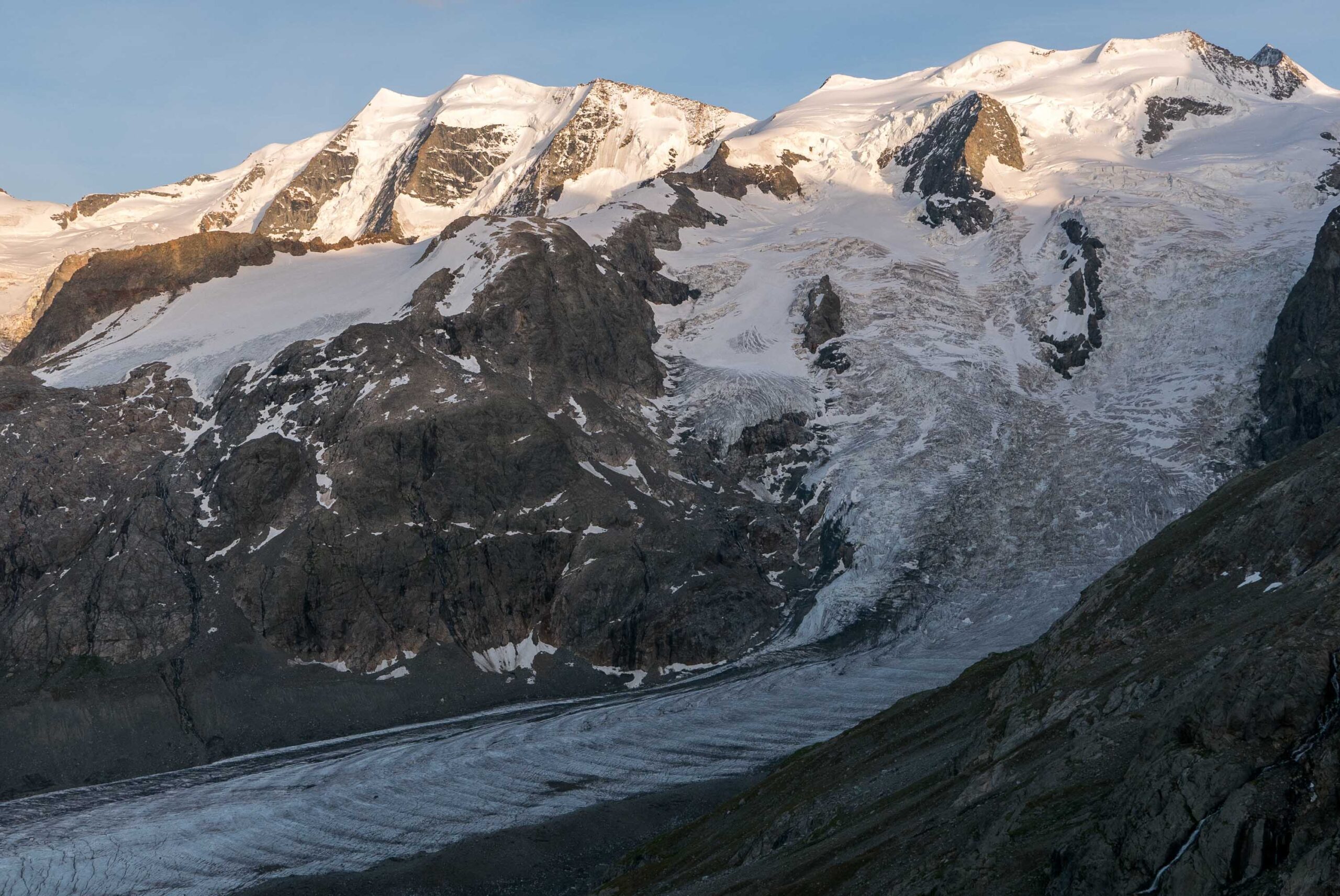
To the east, the glacier has a tributary called Vadret Pers. This much wider but shorter and thinner glacier was connected to Morteratschgletscher until 2014. It used to contribute almost half of the total ice influx to the snout, based on the position of the medial moraine. A cable car goes up to Diavolezza at 3000 m and gives a nice view over Vadret Pers.
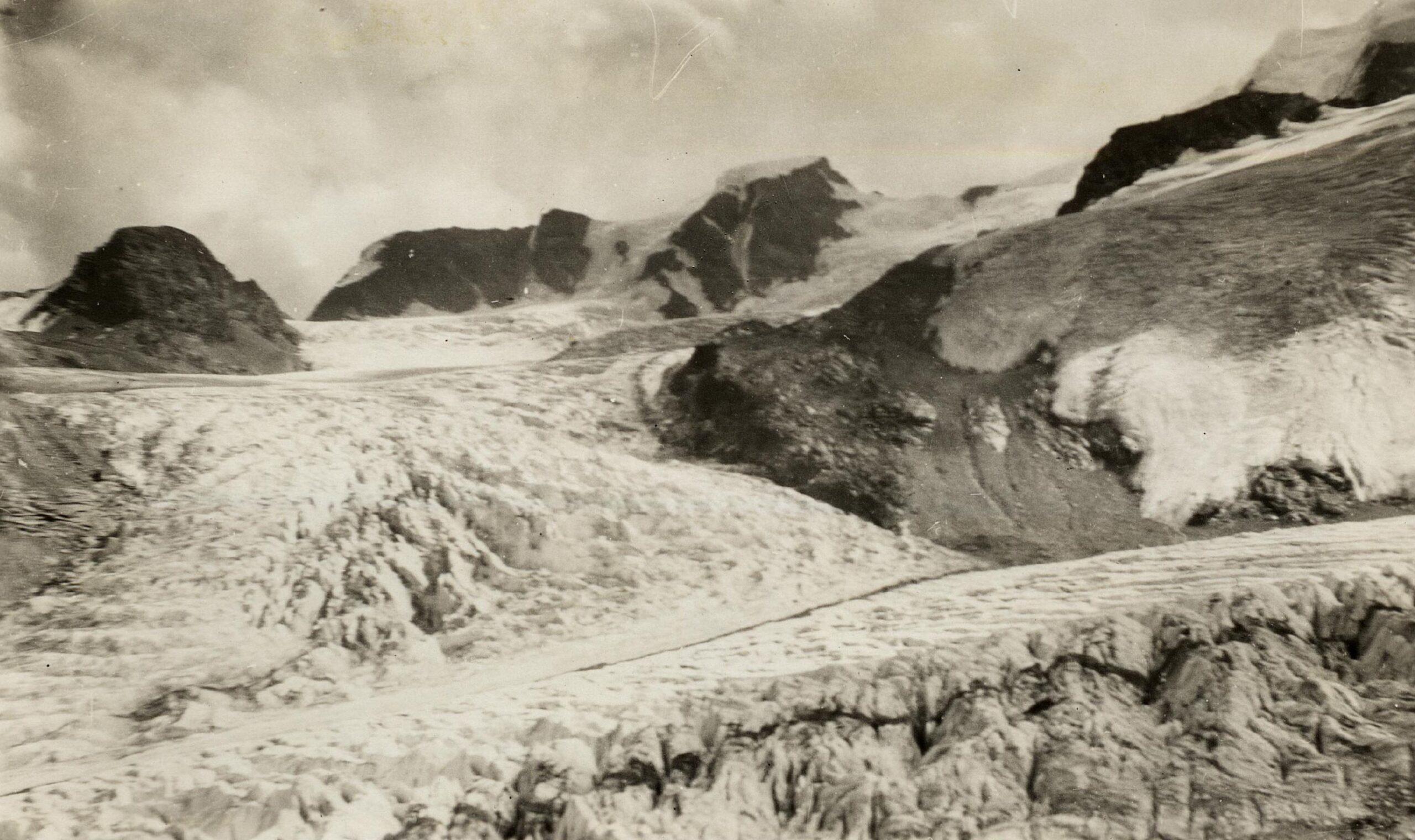
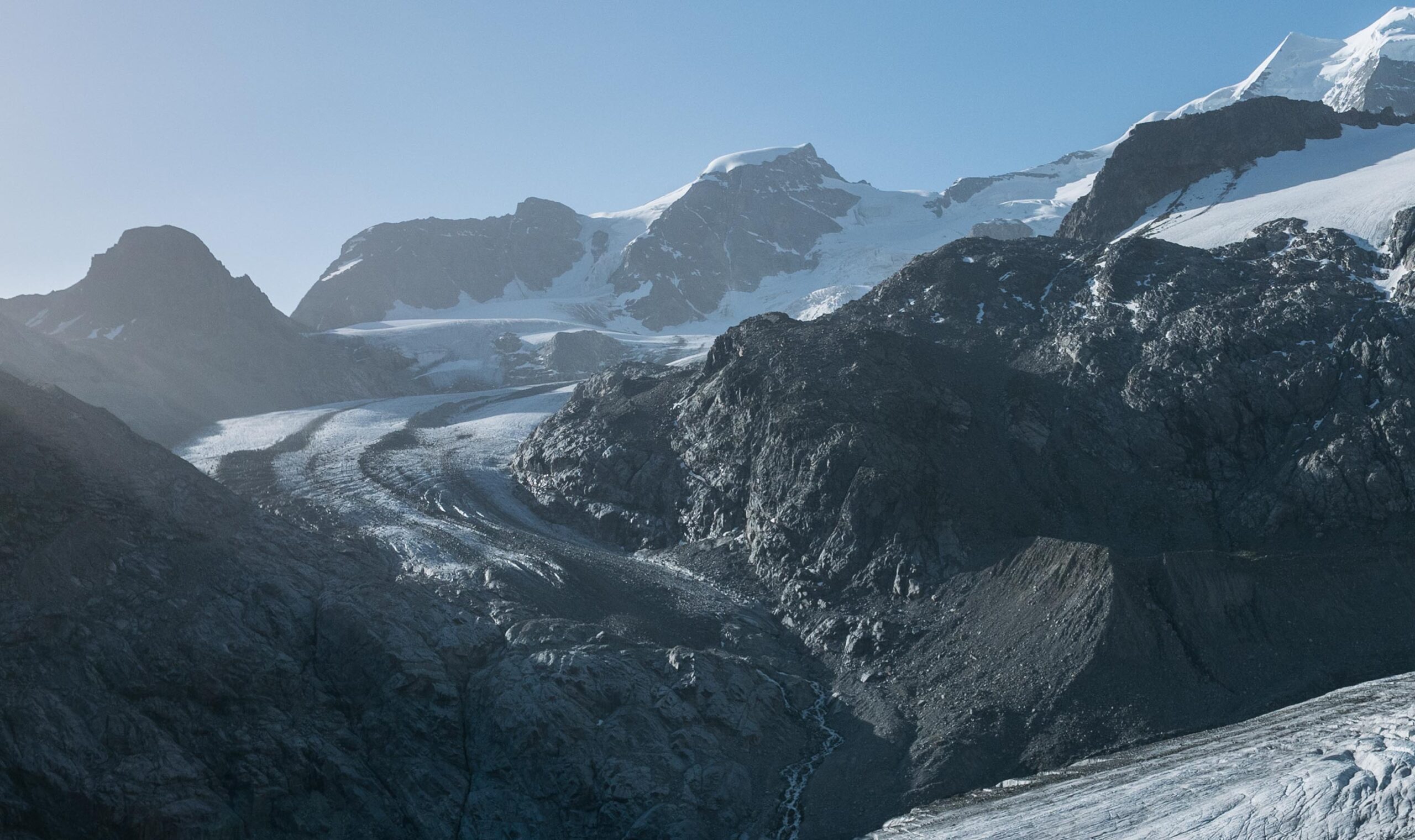
Confluence of Vadret Pers and Morteratsch Glacier in 1922 (left) and 2022. Source 1922: Library Zürich, photo Hs_1458-GK-B094-1922-0001.
For a long time, Morteratch glacier was one of the most accessible glaciers in the Alps. When the spectacular Bernina railway line opened in 1908, it included a station at Morteratsch, only 200 m from the glacier’s maximum position in the middle of the 19th century. But in 1908, the glacier was already receding for a few decades. The engineers therefore didn’t have to fear that their railway would be crushed by the glacier, even though it was still only about 400 m away.
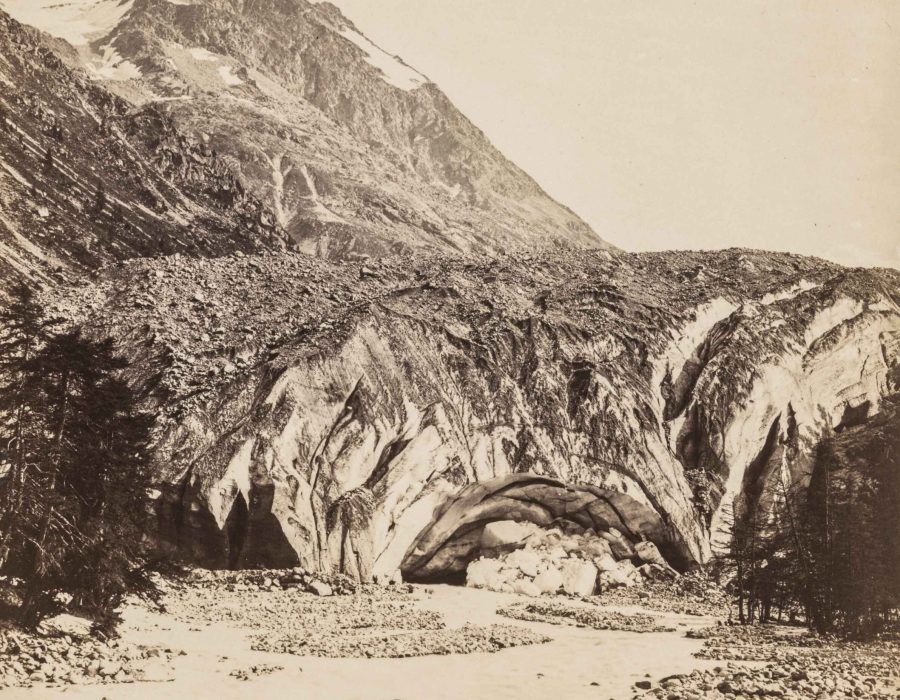
By now, the glacier has receded over 3 km. Quite some research has gone into the melting process, again thanks to the easy access. An automatic weather station was installed on the glacier, delivering unique meteorological data for 20 years. It registered a darkening of the ice over the years, because the ice surface collected dust from the exposed lateral moraines. Thus a feedback mechanism was found: more of the moraines get exposed as the glacier melts, and melt increases as the ice darkens due to dust (Oerlemans et al., 2009).
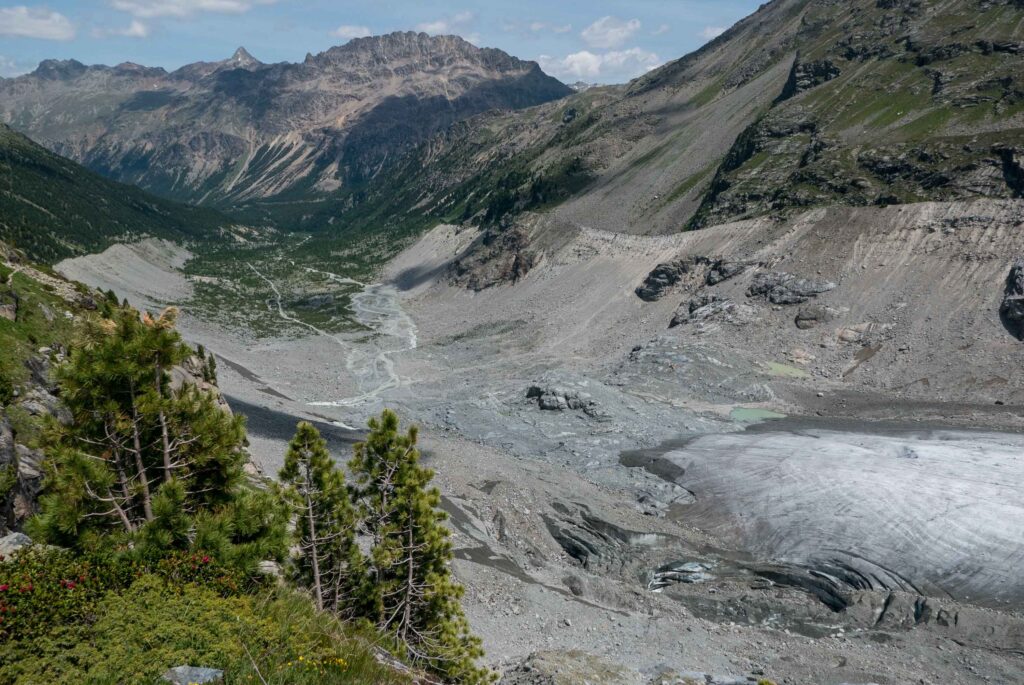
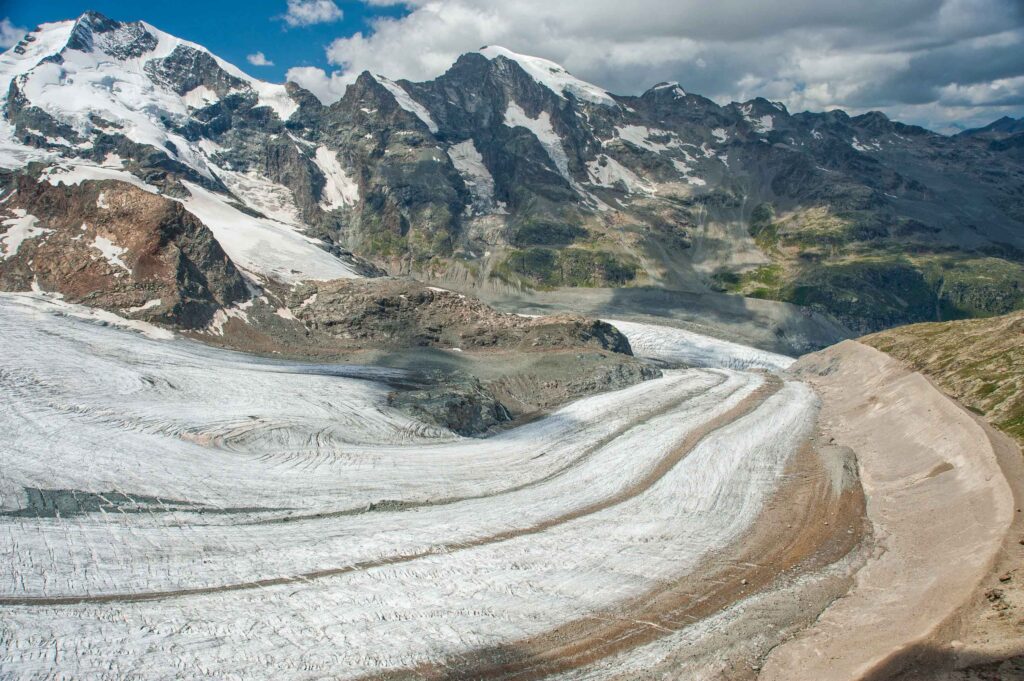
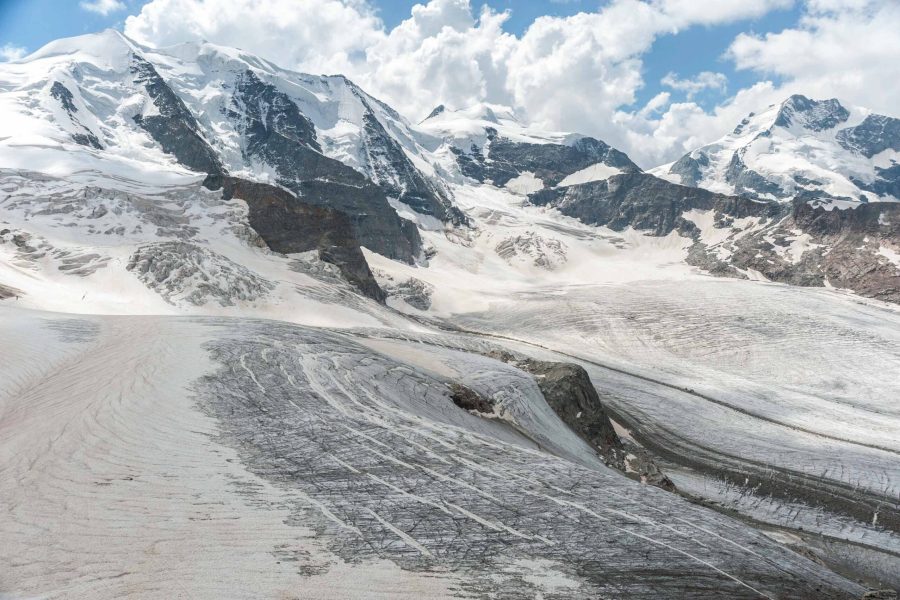
The snout of Morteratsch glacier is thinning by almost 10 m annually. Still, Vadret Pers is going down the drain even faster, relatively. While Morteratsch glacier is somewhat shaded by high mountains, Vadret Pers directly faces the sun. At equal altitudes, Vadret Pers therefore loses up to 3 m more ice annually than Morteratsch glacier. But as the latter one sits lower, it melts faster in absolute terms. Nevertheless, it will survive a bit longer, thanks to its thickness of up to 300 m (Van Tricht et al., 2021).
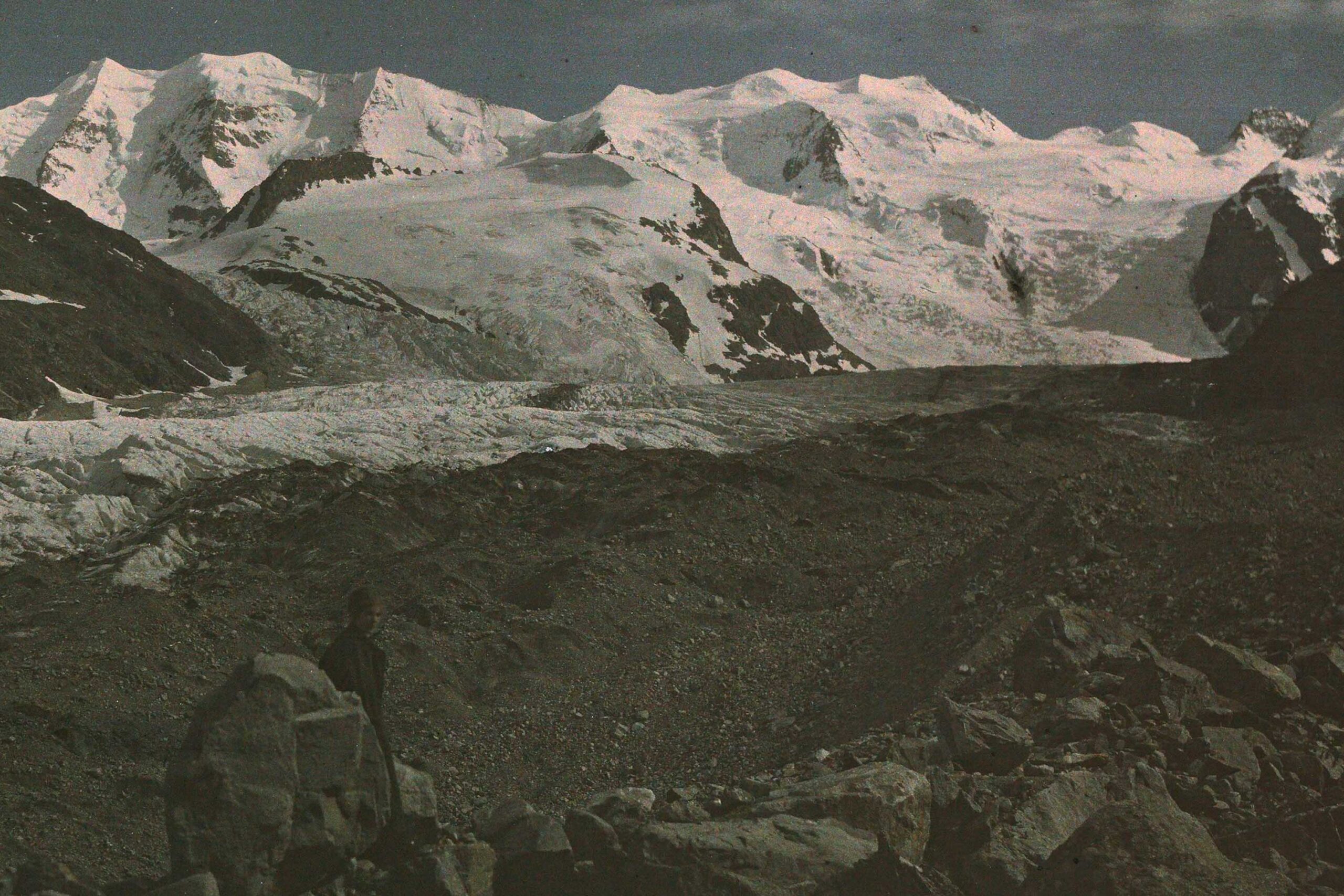
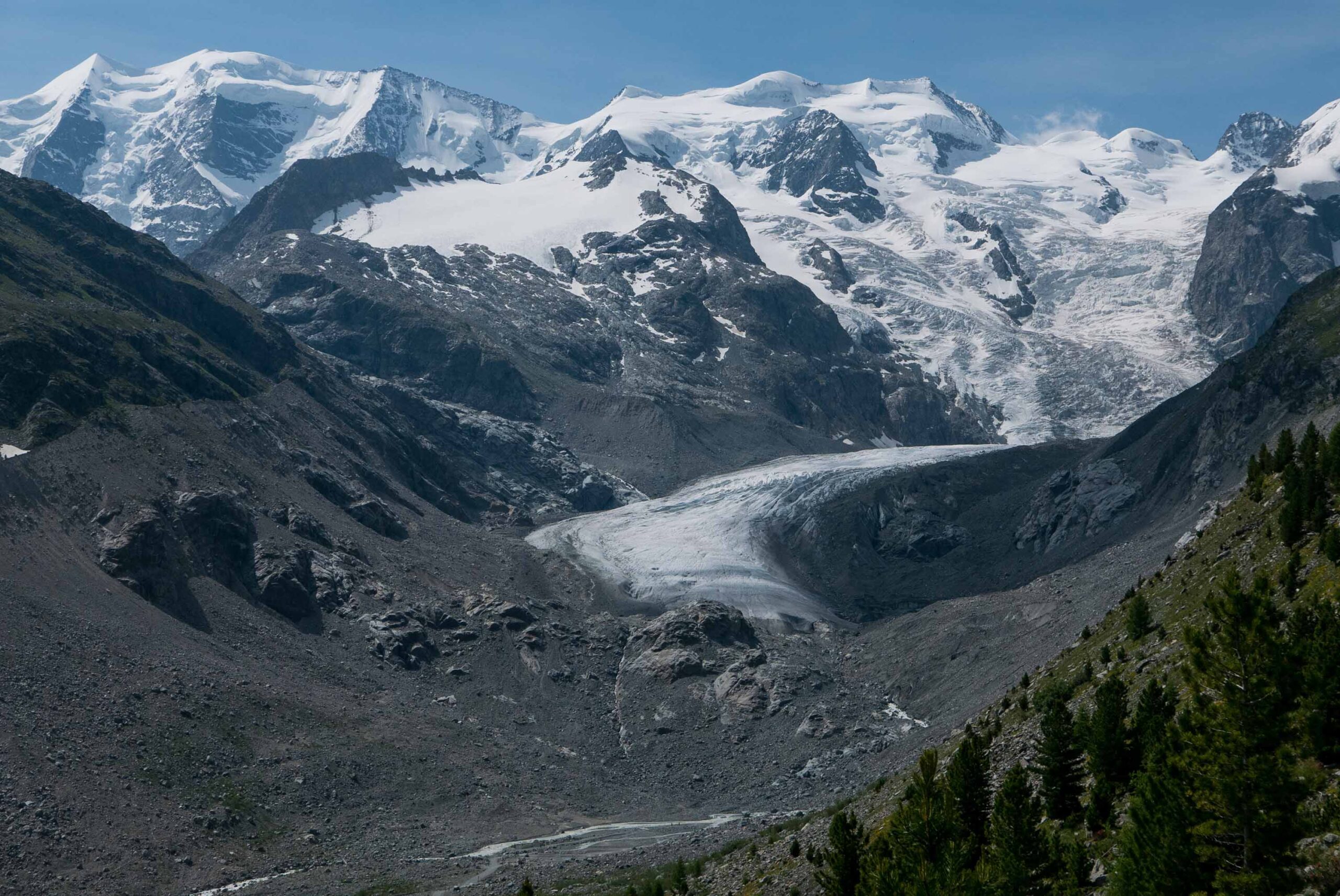
Morteratsch Glacier in 1919 (left) and 2022. Source 1919: Leopold Ruzicka, ETH-Zürich photo 248-040.
Melt rates are controlled by temperature and precipitation. Especially May-June-July temperature determines the ice loss, together with winter precipitation. Commonly, the summer temperature (June-Aug) is used to compare melt rates, but research at Morteratsch glacier shows that the length of the ice ablation season is more important than its intensity. Thus the importance of May (Zekollari & Huybrechts, 2018).
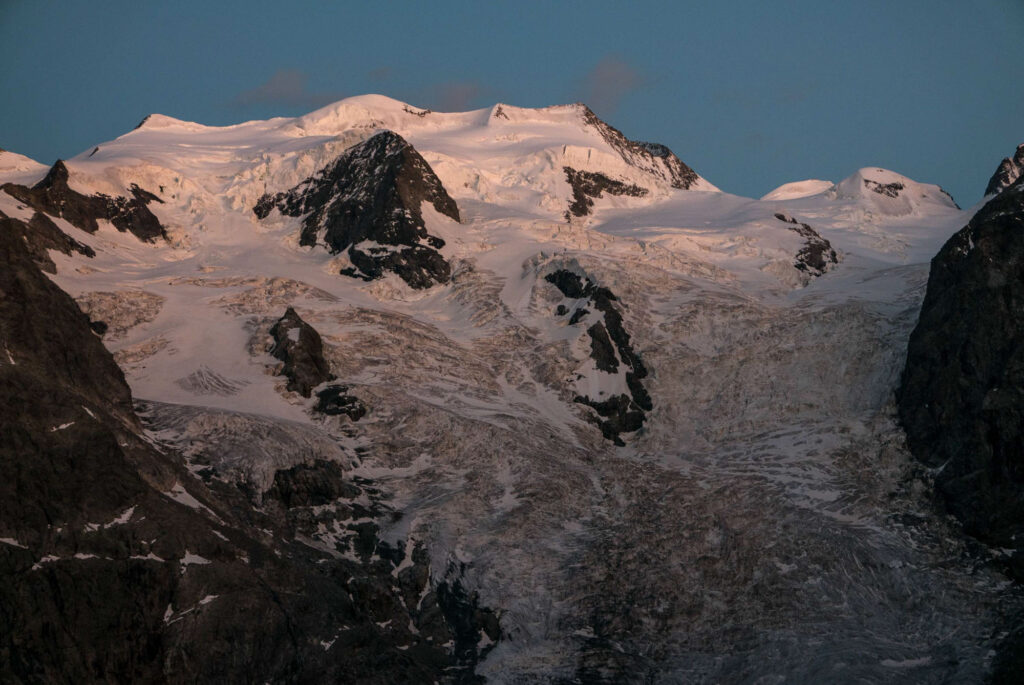
As temperatures rise, the melt season extends. Even with very ambitious climate goals (RCP 2.6), Morteratsch glacier won’t survive. According to an animation made by the Alps’ most famous glaciologist Matthias Huss and his colleague Enrico Mattea, the snout becomes disconnected from the ice fall by 2060 and hardly anything remains by the end of this century. You can see their animation for the glacier at youtube).
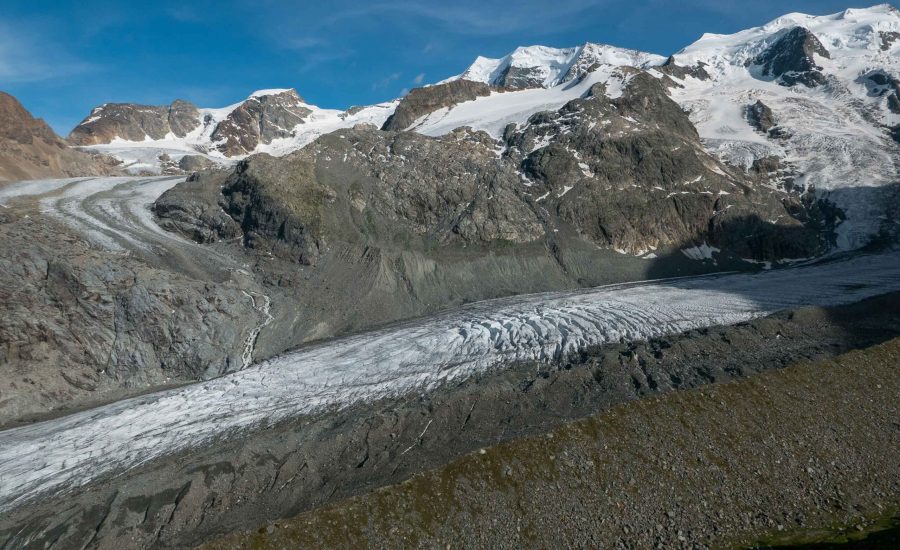
Because humanity is too late with climate mitigation to save most Alpine glaciers, some turn to geo-engineering. A project called MortAlive was launched with the idea of artificially increasing the snow cover on the snout. Melt water would be stored at Vadret Pers in a lake and sprayed over the glacier in winter via a long cable spanning across the glacier. Problem is, it will only delay the retreat by a few decades (Huss et al., 2020). Even though the effects are minor, people keep advocating the project for tourism reasons.
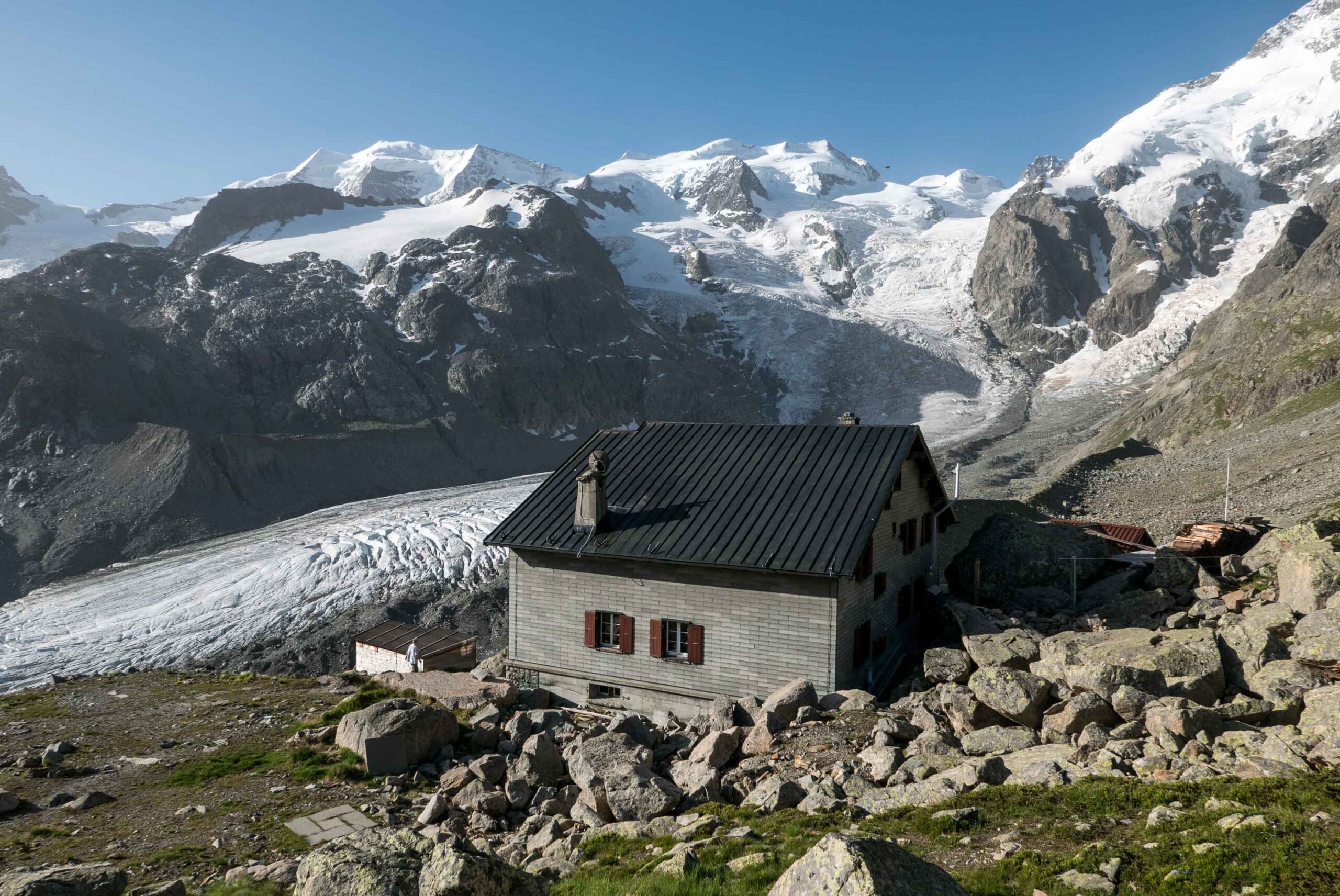
Indeed, many tourists come to the Bernina region for its glaciers. Once, you could get off the train and touch the glacier after a ten minute walk. But as of 2016, you can’t even see the snout from the valley floor, because Morteratsch glacier retreated behind a bedrock outcrop. It makes the artificial snow project even less relevant. You can still see the glacier, though, but it requires a hike to the Boval mountain hut (Morteratsch) or Diavolezza (Vadret Pers). Luckily, both are still rewarding walks.
Search within glacierchange: